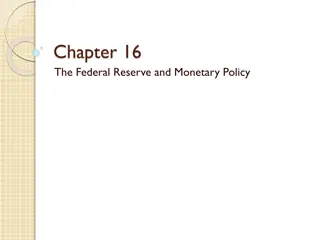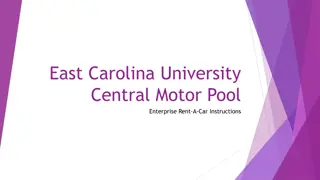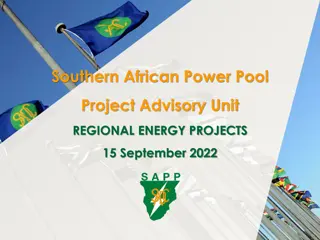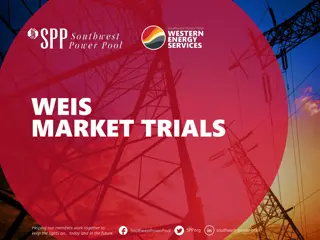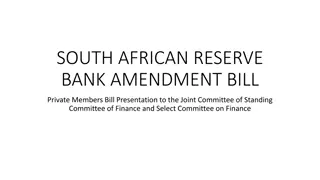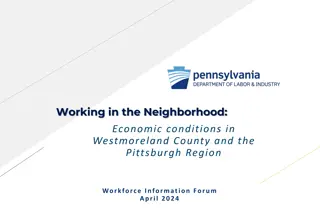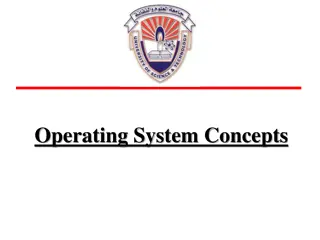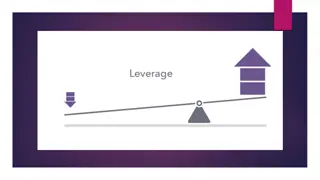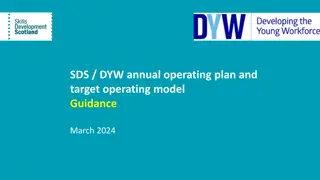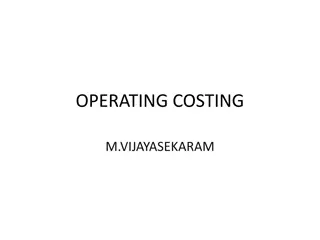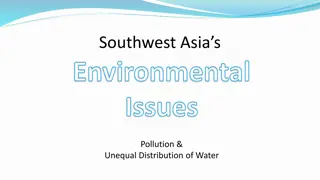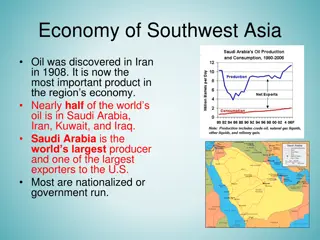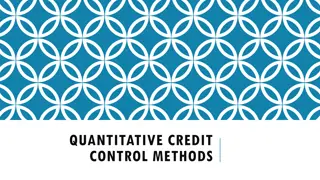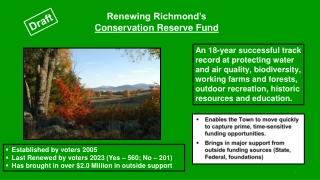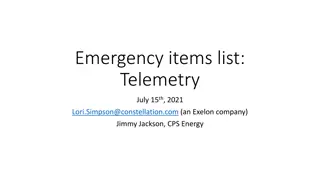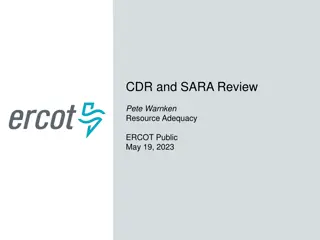Southwest Power Pool: Operating Reserve Market Overview
Southwest Power Pool (SPP) serves a vast territory, providing power to millions with a diverse fuel mix. The market facts highlight the scale and impact of SPP's operations, showcasing significant market participants and generation resources. The integrated marketplace overview details the transition to a comprehensive marketplace, with key differences from ERCOT. SPP's emphasis on coordination and reliability ensures efficient energy management for its members, contributing to a sustainable energy future.
Download Presentation

Please find below an Image/Link to download the presentation.
The content on the website is provided AS IS for your information and personal use only. It may not be sold, licensed, or shared on other websites without obtaining consent from the author. Download presentation by click this link. If you encounter any issues during the download, it is possible that the publisher has removed the file from their server.
E N D
Presentation Transcript
SPP OPERATING RESERVE MARKET OVERVIEW GARY CATE MANAGER, MARKET DESIGN Helping our members work together to keep the lights on... today and in the future. SPPorg southwest-power-pool 1 SouthwestPowerPool
SECTION HEADER SLIDE OPTIONAL USE THIS IF YOU NEED TO DIVIDE YOUR PRESENTATION INTO SECTIONS 2
OPERATING REGION Service territory: 546,000 square miles Population served: 17.5 million Generating plants: 818* Substations: 5,054* * In SPP s reliability coordination footprint 3
0.20% 4.80% 2018 ENERGY PRODUCTION BY FUEL TYPE: 275,887 GWH TOTAL 0.20% 0.10% 5.40% 24% Natural Gas (23.4%) Coal (42.4%) Wind (23.5%) Nuclear (5.4%) Fuel Oil (0.2%) Hydro (4.8%) Solar (0.2%) Other (0.1%) 23.50% 42% 4
MIN AND MAX PERCENT OF GENERATION MIX BY FUEL TYPE 80.0% 70.0% 68.8% 62.7% 60.0% Max 50.7% 50.0% Min Average 40.0% 39.9% 30.0% 24.6% 24.0% 20.0% 14.1% 10.0% 9.9% 6.2% 9.3% 5.0% 6.2% 2.6% 1.2% 0.4% 0.0% Coal Wind Gas Nuclear Hydro June 2018 June 2019 5
MARKET FACTS 225 market participants 757 generating resources 2018 marketplace settlements = $20.5 billion 50,662 MW coincident peak load (8/19/19) Winter peak: 43,584 MW (1/17/18) 16,972 MW Wind Peak (9/11/2019) 67.3% Wind Penetration Peak (4/27/2019) 6
SPP INTEGRATED MARKETPLACE OVERVIEW Day-2 Market Implemented March 1, 2014 Replaced Energy Imbalance Service (EIS) Market launched in 2007 SPP consolidated all EIS member Balancing Authorities (BA) into one SPP BA Day-Ahead Market, Reliability Unit Commitment, Real-Time Balancing, and Transmission Congestion Rights (CRR s in ERCOT) Products: Energy, Regulation UP, Regulation DN, Spinning, Supplemental 7
SPP INTEGRATED MARKETPLACE OVERVIEW (KEY DIFFERENCES FROM ERCOT) Day Ahead Must Offer Must offer enough generation to cover Load and Operating Reserve (Regulation, Spinning and Supplemental) obligations High Participation in Day Ahead Market Average of 99% of Real Time Load bid into Day Ahead Day Ahead Market Commitments are binding Over 95% of all commitments come from Day Ahead Non-instructed deviation from Day Ahead Commitment Plan allocated portions of Make Whole Payment Less aggressive shortage pricing 8
SPP OPERATING RESERVE PRODUCTS Regulation UP Procured in both DA and RT Resources cleared in DA may be different than resources in Real Time Regulation Selection process occurs 30 minutes prior to top of hour REGUP Requirements 2018 450 400 350 300 250 200 150 100 50 No virtual offers. Physical supply offers only. 0 9
SPP OPERATING RESERVE PRODUCTS Regulation DN Procured in both DA and RT Resources cleared in DA may be different than resources in Real Time Regulation Selection process occurs 30 minutes prior to top of hour REGDN Requirements 2018 450 400 350 300 250 200 150 No virtual offers. Physical supply offers only. 100 50 0 10
SPP OPERATING RESERVE PRODUCTS Spinning Reserve Procured in both DA and RT Resources cleared in DA may be different than resources in Real Time Covers trip of largest unit plus of second largest unit SPP typically employs a 50/50 split between Spinning and Supplemental No virtual offers. Physical supply offers only. Spinning Requirements 2018 900 800 700 600 500 400 300 200 100 0 11
SPP OPERATING RESERVE PRODUCTS Supplemental Reserve Procured in both DA and RT Resources cleared in DA may be different than resources in Real Time Covers trip of largest unit plus of second largest unit Supplemental Requirements 2018 800 700 SPP typically employs a 50/50 split between Spinning and Supplemental 600 500 400 Can be offline or online 300 200 100 No virtual offers. Physical supply offers only. 0 12
SPP OPERATING RESERVE AND PRODUCT OFFER CAPS SPP SCARCITY PRICE CAPS (FERC APPROVED, NOT MANDATED) SPP PRODUCT OFFER CAPS (FERC MANDATED) Regulation Regulation $600 $600 Contingency Reserve Cap + Regulation Offer Cap ($100+$500) Operating Reserves Operating Reserves $1100 $1100 Energy Offer Cap + Contingency Reserve Offer Cap ($1000+$100) Regulation- $500 Contingency Reserves- $100 Energy- $1000 (absent FERC Order 831) 13
REGULATING RESERVE DEMAND CURVES 1) Regulation Base Demand Curve Cost to Commit = ???? ????? ?? ???? + ??? ????????? ????? $ [ ?? ???? + 0 Economic Minimum (MW) ] * Min Run Time ?????? ????? ???? =Cost to Commit ???????? ??? 14
CONTINGENCY RESERVE DEMAND CURVES The regions specified for Contingency Reserve scarcity are based on the excess CR SPP carries relative to the largest resource contingency, as required by NERC Currently SPP carries Contingency Reserves protecting the largest resource contingency and half of the second largest in SPP The regions may be adjusted as system conditions change Whenever the largest or next largest contingencies change 0.5 * Second Largest Gen Online (881MW) 15
BIGGEST LESSON LEARNED Regulation Deliverability SPP employs Reserve Zones to ensure deliverability of Reserves SPP clearing engine does not account for the deployment of cleared reserves on Operating Constraints Study is not granular enough to account for some real time system conditions When system is congested, resources that have an adverse effect on a constraint are pushed downwards This makes those resources prime candidates for clearing up Regulation UP Deployment of that regulation then acerbates the loading on the Operating Constraints SPP had to make system changes to address inequities associated with this process Removed the buy back obligation for Resources that were manually removed from regulation by the SPP Operators 16
INTEGRATED MARKETPLACE IMPLEMENTATION Official Start in 2011 Consolidated Balancing Authority, Congestion Rights Market, Day Ahead and Real Time Market, 5 minutes Settlements Budget was approximately $100 Million Approximately 2/3 of cost were Software and Systems Additional costs for program management and support Go-Live March 2014 Reached $1 billion in savings in late 2016 17
INTEGRATED MARKETPLACE IMPLEMENTATION Official Start in 2011 Consolidated Balancing Authority, Congestion Rights Market, Day Ahead and Real Time Market, 5 minutes Settlements Budget was approximately $100 Million Approximately 2/3 of cost were Software and Systems Additional costs for program management and support Go-Live March 2014 Reached $1 billion in savings in late 2016 Reduced overall regulation requirement for SPP by 20% 18
INTEGRATED MARKETPLACE IMPLEMENTATION Significant Stakeholder involvement Bi-weekly meetings to design and write tariff and protocols Co-optimization was one of primary goals Most efficient way to clear Provides opportunities for participants and savings for ratepayers 19
INTEGRATED MARKETPLACE SCOPE/READINESS/GO-LIVE ISSUES Scope Clearing Regulation Up and Regulation Dn as separate products initially created issues Mainly from commitment perspective Real Time market had less performance issues Readiness Understanding economics of clearing particular product becomes more difficult. Significant learning opportunities for participants and staff. Go-Live Previously discussed deliverability issues Majority of our issues were from a commitment perspective and not really related to co-optimization 20
TIPS/TRICKS Managing deliverability Constraint impacts Ramp Rate interaction Ensuring appropriate ramp is available for all products Ramp Sharing Product Substitution Ramping Capability Product 21
QUESTIONS? 22
Gary Cate Manager, Market Design Please feel free to contact me at gcate@spp.org 23


